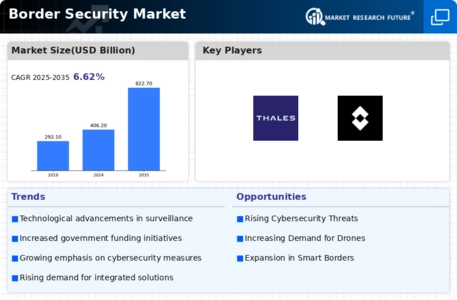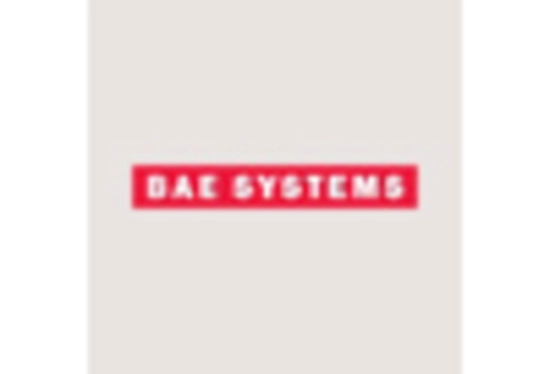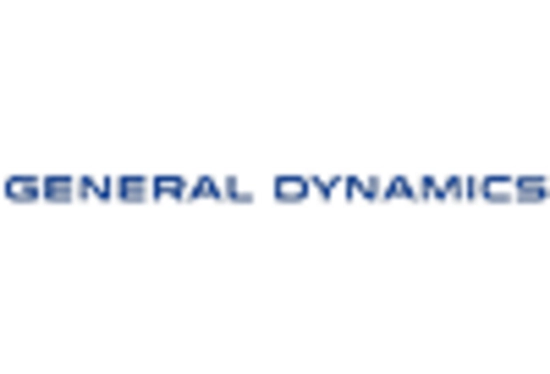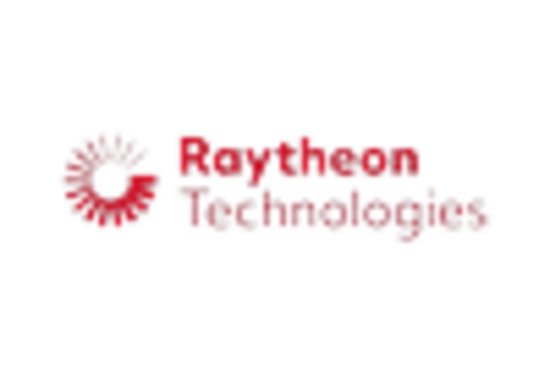Market Share
Border Security Market Share Analysis
The Border Security Market is witnessing several notable trends that reflect the industry's response to evolving security challenges and advancements in technology. One prominent trend is the increasing adoption of integrated border security solutions. Governments and border control agencies are shifting towards comprehensive systems that combine various technologies, such as surveillance cameras, sensors, biometric identification, and data analytics. This integrated approach allows for a more holistic and effective management of border security, enabling real-time monitoring, faster response to threats, and enhanced situational awareness.
Another significant trend in the Border Security Market is the growing use of unmanned aerial vehicles (UAVs) or drones for border surveillance. Drones equipped with advanced sensors and imaging technologies offer a cost-effective and efficient means of monitoring large border areas. The use of drones enhances the surveillance capabilities of border security forces, providing aerial coverage that is otherwise challenging to achieve. This trend reflects the industry's embrace of innovative technologies to improve the effectiveness of border surveillance and response.
Biometric technologies are experiencing increased prominence as a trend in the Border Security Market. The use of biometrics, including fingerprint recognition, facial recognition, and iris scanning, enhances the accuracy of identity verification and facilitates the tracking of individuals crossing borders. Biometric solutions contribute to more robust border control measures, reducing the likelihood of unauthorized entry and supporting the overall security infrastructure. This trend aligns with the global emphasis on enhancing identity verification processes for secure border management.
Smart border technologies and the integration of artificial intelligence (AI) are emerging as transformative trends in the market. AI-powered analytics and machine learning algorithms enable border security systems to process and analyze vast amounts of data in real time. This capability enhances the ability to detect and respond to suspicious activities, anomalous behavior, and potential security threats. The trend towards smart border technologies reflects a shift towards more proactive and intelligence-driven approaches to border security, ensuring a more adaptive response to dynamic security challenges.
The use of blockchain technology is gaining traction as a trend in the Border Security Market. Blockchain offers secure and tamper-resistant storage of data, enhancing the integrity and transparency of border control information. Governments and agencies are exploring blockchain solutions for secure identity verification, document authentication, and secure data sharing among relevant stakeholders. This trend addresses concerns related to data security and integrity in border management, contributing to more robust and trustworthy security systems.
The incorporation of drone detection and counter-drone technologies is becoming a crucial trend in the Border Security Market. As drones are increasingly utilized for both legitimate and illegitimate purposes, the need to detect and mitigate potential threats from unauthorized drones grows. Border security forces are adopting technologies that can identify and neutralize unauthorized drone activities, preventing potential security breaches. This trend reflects the proactive measures taken to counter emerging threats and maintain control over airspace at border regions.
Cross-border collaborations and information sharing are gaining prominence as trends in the Border Security Market. Recognizing the transnational nature of security threats, countries are fostering closer cooperation and sharing intelligence to enhance collective border security. Collaborative initiatives, regional partnerships, and the exchange of information contribute to a more coordinated and effective response to border security challenges. This trend underscores the importance of international cooperation in addressing shared security concerns and optimizing border control measures.
Climate change and environmental monitoring are emerging as trends influencing border security strategies. The impact of climate change, including natural disasters and changing migration patterns, requires border security systems to adapt to new challenges. Monitoring environmental factors, such as extreme weather events or shifts in migration routes, allows for a more informed and responsive border security approach. This trend reflects the broader recognition of the interconnectedness between environmental factors and border security considerations.









Leave a Comment